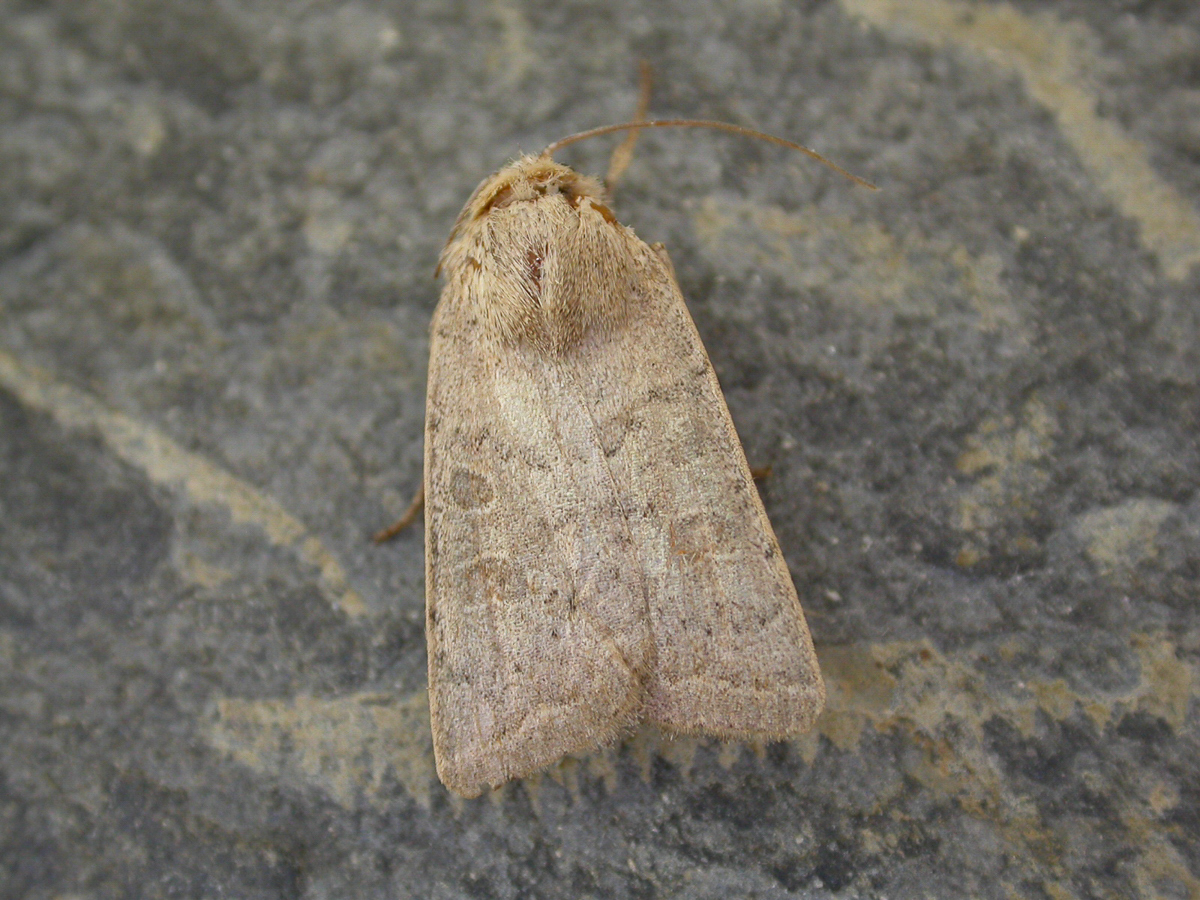
Photo © Andy Mitchell
Hoplodrina blanda (the rustic) is a moth of the family Noctuidae. It is found in the Palearctic realm (Europe, Morocco, Iran, Russia - south Urals, and southwest Siberia).
The wingspan is 31-35 mm. The length of the forewings is 13-16 mm. Forewing fawn-tinged grey, with a fuscous suffusion, with the ground colour sometimes paler, more luteous ochreous, especially in examples from W. Turkestan; costal edge pale; inner and outer lines obscurely marked; the median and praesubmarginal shades distinct; stigmata fuscous grey, with pale annuli; hindwing whitish, grey-tinged towards termen; the veins and cell mark darker; altogether darker grey in the female. Occurs throughout Northern and Central Europe and in Central Asia. These Asiatic examples — from Issyk-Kul; the defile of Little Kisil-su, Tianshan; Kappak, Alexander Mts.; and Ketmen-tjube, Sussamyr Mts.; must be separated certainly as an ab. centralasiae ab. nov. [Warren] though very possibly a distinct species; the ground colour of the forewing is paler, tinged with pinkish brown along the two folds, and the dark markings stand out more conspicuously; the costal edge is pale; the hindwing, even in the female, is whiter, showing a distinct cell spot. Described from a series of more than a dozen males but only one female, from the above-mentioned localities; the type male from Kappak, the female from Ketmen-tjube. Similar to and confused with Hoplodrina octogenaria and Hoplodrina ambigua. Certain identification requires dissection of the genitalia.See Townsend et al.
The moth flies in one generation from late May to early September. .
Larva ochreous with red or brown suffusion and dotted with dark; dorsal line yellowish edged with small black marks; subdorsal lines pale, dark-edged below; head pale marked with darker: on sundry low plants. The larvae feed on herbaceous plants such as Plantago, Stellaria and Rumex.
Source: Wikipedia
The primary larval foodplants are dandelions (Taraxacum spp.), docks (Rumex spp.), grasses, knotgrasses (Polygonum spp.), plantains (Plantago spp.) and stitchworts (Stellaria spp.).